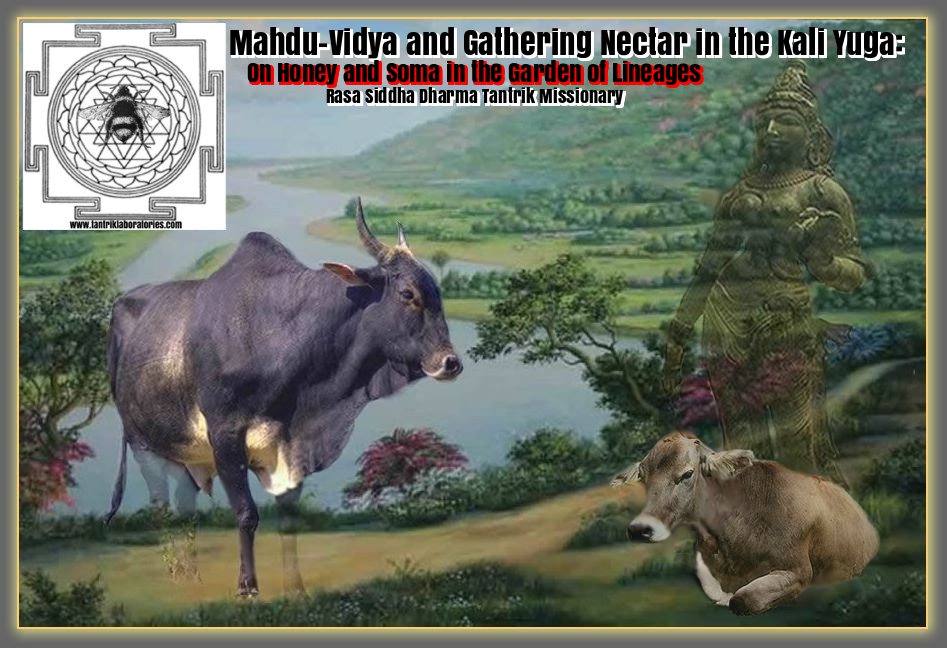
“As a bee seeks nectar from all kinds of flowers, seek teachings everywhere. Like a deer that finds a quiet place to graze, seek seclusion to digest all that you have gathered. Like a mad one beyond all limits, go where you please and live like a lion, completely free of all fear.” ~ Dzogchen Tantra
“O Asvins, lords of Brightness, anoint me with honey of the bee, that I may speak forceful speech among men.” Rig Veda
The something of this reality arose from a nothing or no-thing of undifferentiated chaos. The seed of all the myriad things and beings was kinetically present as supreme consciousness which is manifested over aeons and yugas. Humanity, poised between beast and God, has animal nature and divine spirit co-mingled with the inter-stellar elementals that form the matrix of the macrocosm universe and the microcosmic human body. The fundamental ultimatum of existence is the power and energy of these forces that converge in the human body, perhaps best expressed as the tiger and the lotus. It is these iconic symbols that are familiar in the renderings of the Maha Yogi Lord Shiva, who sits upon his sublimated tiger animal nature and enlightenment is illustrated as the blossomed crowning lotus above the head. The consciousness that expressed these archetypes or templates confronted this essential crisis of being and sought to penetrate deep within to organically accelerate their consciousness to the highest levels. The supreme nectar of enlightenment is Madhu-vidya or ‘Honey-knowledge’ which is that of the supreme Bliss of the Self which is metaphysically sweet as well as producing an actual sweet internal rasa or amrita nectar in the mouth.
Out of the sacrificial soma cults and Aryan militancy, the seers tire of the fragile and temporal life and a religious/philosophical and magical consciousness arose in this holy land unique in its quest for personal transcendence. The oracular honey drinks can be found all over the Indo-European world from the mead of inspiration of Odin, to the magical meads of the Druidic bards, alchemists into the honey soma/haoma cults of India and Persia and found in cognates from amrita to ambrosia. From these arose the skillful means and spiritual technologies that produced the god-like Siddhas found in many Asian traditions. It is clear that the compromises, persecutions, genocides, invasions and occult concealment has led to the true alchemical tradition of the Great Work to be fragmented over many sects. These different sects and lineages do possess a huge amount of the lore, which holographically contains the universals of the unified alchemical doctrines and as such have flowered into beautiful, fragrant paths that are the floral garlands of those that seek Divine Truth. The seeker must become the honey bee initiate and gather the nectars from the different elegant flowers of the path and produce the true elixir honey with the queen bee of the inner Shakti Goddess.
To pierce the veils, the sheaths, the obstacles the limitations of humanity required an immense amount of power. Power could be found in sacrifices where vital fluids released bio-photons of raw energy, or in the generative and sexual fluids which had the capacity to create life. The metals and minerals of the world, that were powerfully toxic were said to be the sexual fluids (rasas) of the gods themselves, which were poisonous to the extreme but potentially medicinal and holy if they could be controlled, detoxified or otherwise rendered beneficial. The detoxification of the outer poisons is an external reflection of detoxifying inner spiritual and physical poisons. The initial and primary power of the Soma rites (which was possibly fermented honey or mead with psychoactive plants in a alchemical electrum cup, with monoatomic nano-elemental bhasmas) was never lost but went underground. In the primary source of soma lore, the Rigveda (which is the oldest scripture in the world) the term “Madhu”, meaning honey, is used 300 times. It is used as both literal honey, a fermented drink of the soma, and metaphor as in, “Here are thy invokers (worshipers) together waiting with offering for thee like bees sitting together on honey” (Rigveda 7.32.2). Indian scholars note the pervasive use of bee allusions from religion to caste formations of society and social organizing:
“(1) The ancient Indians had gathered some information about general social organization among bees and particularly about (2) the presence of a regal caste, (3) Domination of a hive by a single individual belonging to this regal caste, (4) behavior of bees during swarming or desertion and (5) such swarms being led by single member of this regal caste, Which they wrongly called a ‘King-bee’ but involved into a bee goddess or a male god taking the goddess form as in Krishna.”
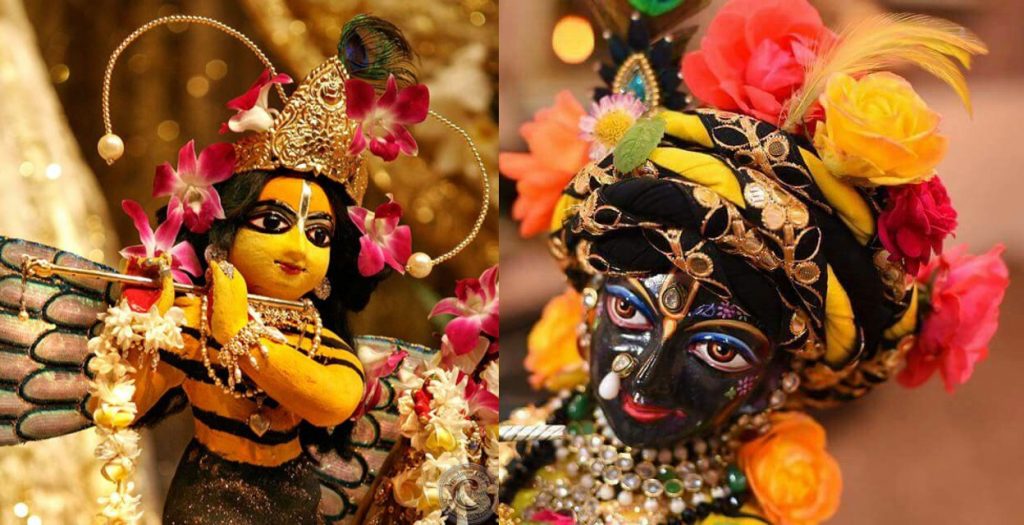
Bhramari is a Hindu Goddess. She is an incarnation of the Goddess Shakti. Bhramari means ‘the Goddess of bees’ or ‘the Goddess of black bees’. She is associated with bees, hornets and wasps, which cling to her body. She is typically depicted as holding a mace, trident, sword and shield in her four hands. Her story illustrates the sacred feminine power, the true Shakti that is expressed in the alchemical wedding of man and wife, as well as the merging with the internal Shakti power to defend against attacking demons. She rescues Shiva and his sons at Kailash from an ultra powerful demon that was blessed with powers from austerities that lasted aeons. The demon is Arunasur “a furious God hater and a hypocrite” and received a:
“boon from Lord Brahma that he will not be killed by any two- or four-legged creatures… and puffed up with that boon, the demons Arunasur called on all the other demons that lived in the nether regions. The demons came and saluted him, as their king and, by his command, they sent messengers to the Heavens to fight with the Gods. Hearing from the messenger that the demons were willing to fight with the Gods, Indra trembled with fear and went instantly with the Gods to the abode of Brahma. Taking Brahma, too, along with them from there, they went to the Vaikunth and took Vishnu with them and all went to Kailash where Lord Shiva lived. There they all held a conference on how to kill the demon, the enemy of the Gods. Arunasur, the king of the demon surrounded by his army, went to the Heavens. The demon, then, through the power of his penances, assumed various forms and seized the rights and possessions of the Moon, the Sun, Yamraj, Agni and all the others. All the Gods, then, dislodged from their stations went to the region of Kailash and represented to Lord Shiva about their own troubles and dangers respectively. They turned to Parvati, the part incarnate of the Supreme Goddess, to save them to kill Arunasur in the Himalayas.”
Parvati used her weapons and an army of bees, hornets, wasps and other stinging insects to route the demons, and her assuming the form and title as Goddess Bhramari Devi. There is also a specific breathing associated with the bee, Bhramari Pranayama (Bee Breath), which is used to settle the mind, and calm the demons of headaches, stress and vexation and this simple method is explained below.
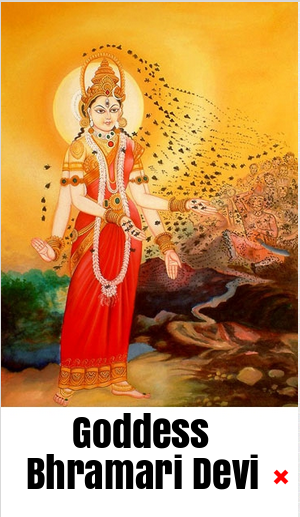
The underground Soma technology began emerging in Tantra and alchemy in many sects of Jains, Buddhists, and Vedic Siddhas who employed the same substances and techniques, but purified or evolved, synthesized and elaborated upon depending on the context. In the Rig Veda, Soma, the Vedic God, symbol of spiritual truth and actual sacramental drink, is addressed as Madhu, the nectar or ambrosia, the drink of Immortality sought by both gods and men. Rishi Vamadeva wrote how the “saving of the knowledge of Madhu or Soma Doctrine came to him through a hawk in a sudden flash in his darkest hour”. These include the manipulation of mental and sexual energies in concentration as well as the use of powerful herbs, metallic-mineral medicines, and occult methods to bring this energy to supreme focus. This is not to reduce the spiritual quest to some recipe for success of finding just the right methods, as some ‘passport to heaven’ or spiritual indulgence. It becomes one of asserting the full focus and intensity of the individual to elevate and enlightenment and ultimate realization with such profound Will that the poisons transmute, the veils drop, and the divine consciousness blossoms. But there is also a reciprocation from the Divine realms, expressed in the organic subtle light that descends in a Vast Grace Light, to use the term of Siddha Vallalar.
Indra separated heaven and earth, and is said to have received honey as his first food. Similarly, the Indian Bee goddess Bhramari Devi derives her name from the word Bramari, meaning ‘Bees’ in Hindi and she resides inside the heart chakra and emits the buzzing sound of Bees, called ‘Bhramaran’. Lord Krishna manifests as the Bee goddess Madhusudana. Likewise, the sound of a Bee humming was emulated in Vedic chants and the humming of Bees represented the essential sound of the universe all across India. In the Upanishads the sacrifice (the flower) when surrounded by the Rik verses (the bees), yields its essence in nectar. The sun is the honey of the Devas, the heaven is the cross-beam from which the sky hangs is a hive, and the bright vapors are the eggs of the bees. The eastern rays of the sun are the honeycells in front. The Rik verses are the bees, the Rigveda sacrifice is the flower, the water of the sacrificial libations is the nectar of the flower. This analogy is continued for the Yajurveda, Samaveda etc. These allusions are found in Tantric texts as well, and in many Indian-derived Tibetan texts, the buzzing of the mind is compared to a beehive, as are certain secret mantras.
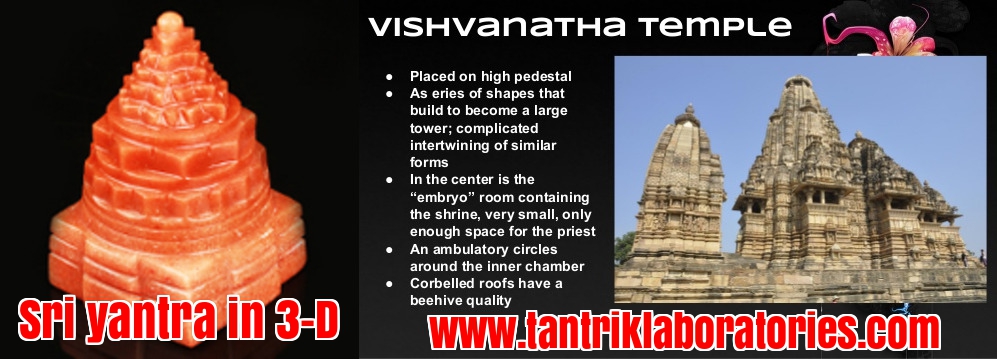
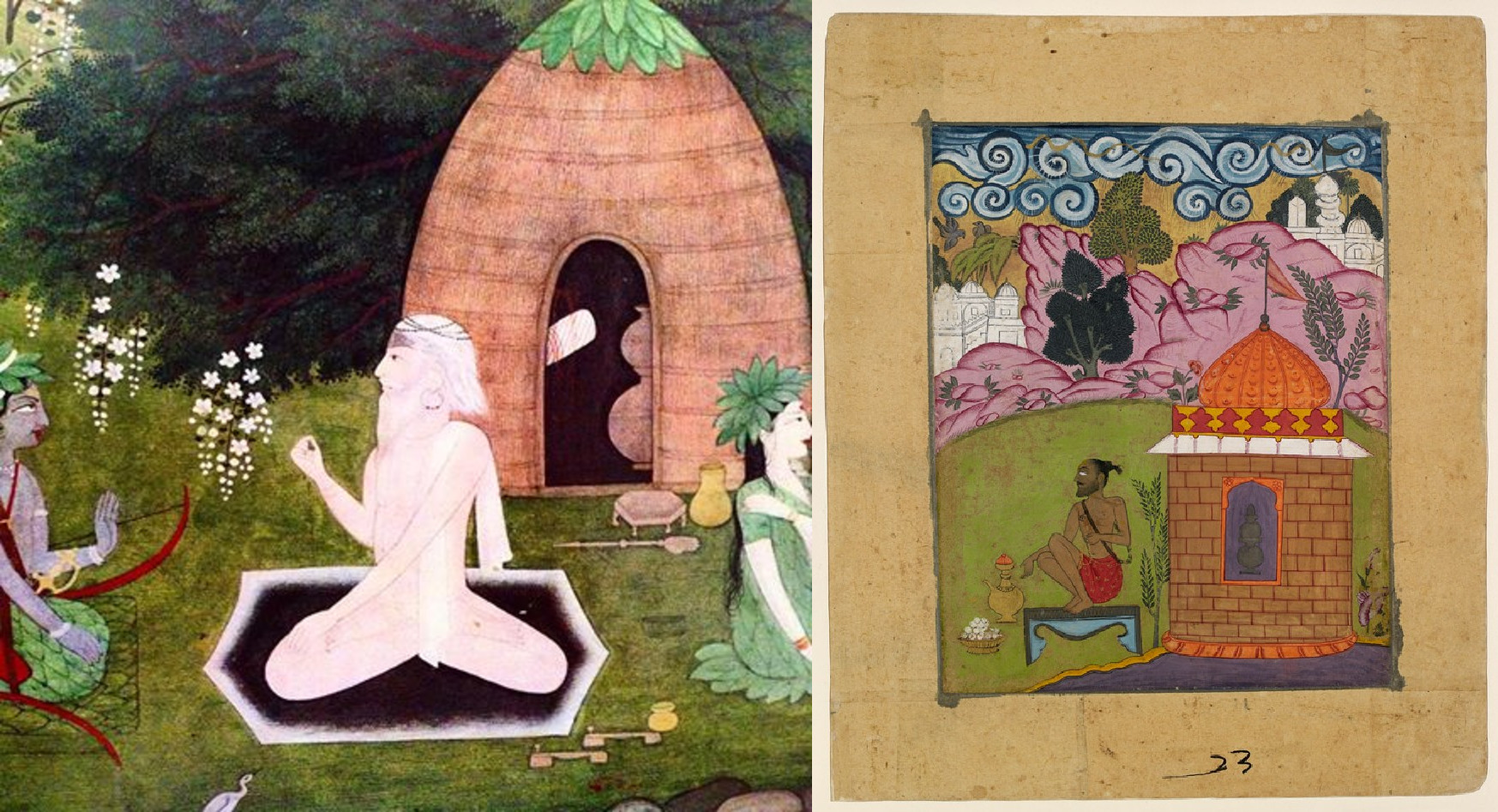
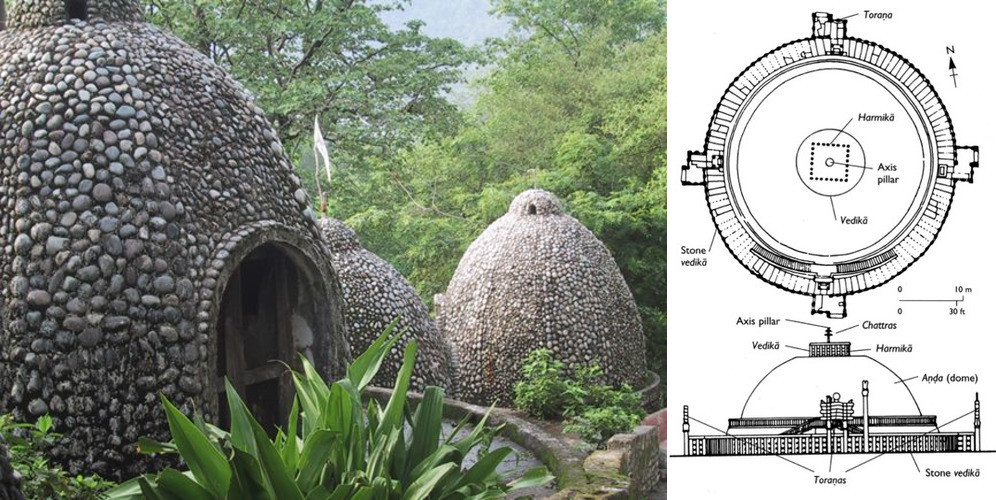
There is a mysteries process in gathering diverse flower essences from many plants and the production of honey and its by-products of propolis, royal jelly and pollen. The most subtle diets of the yogis will subsist completely on these flower essences, or chulens with the yogi literally becoming the bee in gathering the delicate nectar of flowers. Honey is also a primary matrix for medicinal herbs, especially in the Tamil Siddhas, and Siddha Bogar has many herbal preparations (and the navapashanam temple prasad) in honey. Siddha Bogar also has a special yogic medicine taking 120 days to make which involves placing an amount of honey in two joined earthenware jars (damaru yanta) and luting it with mud and burying it. This is to have a fire kindle upon it for the duration of 120 days that turns the honey it a crystal superfood for yogic meditation. One will also notice the shikhara architecture of South Indian temples is always described as beehive/curvilinear shaped, as is the vimana. The temples hermitages and sacred shapes thus resemble the bee skep, which was also a special symbol for alchemical and esoteric groups in Western traditions. Yet another note is the ancient knowledge of a wild Himalayan honey that is highly psychoactive and much sought after for its euphoric effects might well play into the ancient Soma and honey connections. This is made from a honey gathered from wild rhododendron flowers from the Himalayan cliff bee Apis dorsata laboriosa: “Red honey or what some people call mad honey is known to contain extremely a powerful hallucinogen that is used as a recreational drug as well as a medical one as well. This particular honey is thought to be extremely effective at treating from diabetes and poor sexual performances all the way to hypertension, but only when taken in very small doses. If taken in high doses this hallucinogenic honey can become highly toxic and in some cases even fatal.”
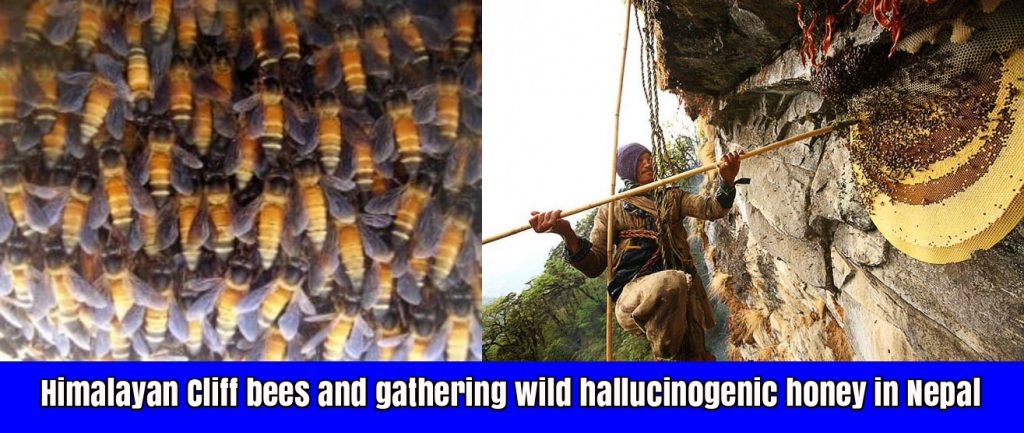
Archaeology and textual analysis finds a correlation between the technology of beekeeping verses wild collection as corresponding with birth of certain gods or classes of gods. “The colony of the Indian honeybee was referred to in the Vedic literature as the “Frail Cow”, and its combs as “skin of vegetable origin” of invention of our artificial hive, the skin of a frail cow was used. This story has its counterpart in Greek mythology where a swarm of bees came from inside a dead-bul.”
It was said that Aryans discovered and kept beekeeping a strict secret, and thus “reduced their dependence on the local tribal people for their honey supply. The Aryans kept their newly acquired knowledge as a closely guarded secret and severe punishment was prescribed for those passed this knowledge on to the local primitive tribes.
In fact when one of the Vedic saints, Dadhyaṅga taught the knowledge of honey to Aśvins against the instruction of Indra, his head was cut off. Dadhyaṅga or Dadhichi, however, got his head replaced by the Aśvins, who were also expert surgeons.”
Dadhichi is said to have been a master of a Vedic art known as Brahmavidya (Madhu Vidya) that would enable one to attain immortality. Indra, the King of the Devas, felt his position was insecure with such power in the hands of a mortal man, especially one with as much power as Dadhichi possessed by virtue of being a rishi. Indra was also against the Ashwini twins (Gods of Medicines) learning Brahmavidya and swore that he would behead the one who taught them the art. However the Ashwini twins wished to learn this art and devised a plan to protect Dadhichi from Indra’s power. They learned the art from Dadhichi after cutting off his head, preserving it and replacing it with one from a horse. Indra, blinded by his wrath, beheaded the horse-headed sage and left. The Ashwini twins then put Dadhichi head back and revived him with the Madhuvidya that he had taught them. This was how the sage came to be called Ashvashira – The One with the Horse’s head.” As an adept of Madhu-vidya; “he held the doctrine of the mutual interdependence of things, because all things are indissolubly connected in and through the Self. As all the spokes are contained between the axle and felly of a wheel, all things and all selves are connected in and through the Supreme Self. Nothing exists that is not covered by the Supreme Self. Thus, he taught the doctrine of the supreme existence of the one, and the apparent existence of the many.” This is the cohesive doctrine underlying all these schools, most articulated in the Rasa Siddha lineage by Nagarjuna in his writings of Pratityasamutpada.
This Rishi is particularly important as the source of the vajra body, literally made from his bones. “Dadhichi is primarily known for sacrificing his life so the Devas, or benevolent Gods, could make the weapon called “vajra” from his bones. After being driven out from Svarga, or heaven, by the serpent king Vritra, the Deva needed a powerful weapon to aid their fight. By making use of the vajra, made from the sage Dadhichi’s bones, the Devas defeated the Asura and reclaimed heaven.” Here is the origins with the soma and diamond vajra body, the Madhu Vidya and Twin Surgeons. We have written elsewhere of the connection with the horse head and horse sacrifice with a certain entheogenic plant elsewhere in Plant as Guru. Dadhichi is also known as a devotee of Lord Shiva, and after Shiva was separated from Shakti, he went to a forest to live in seclusion as a Rishi. The annual festival of Maha Shivratri marks the first time Lord Shiva appeared as a Rishi to his devotees, including Dadhichi and his disciples, who had been offering prayers to Shiva. This is the uniting with the indigenous Shiva cult with the Aryan Soma cult in the forest mystics and rishis who synthesized and took the best of both.
We can clearly see that these technologies were fiercely guarded from the Gods to mortals and from elite mortals to those they considered primitive. Such sharing was begrudged even amongst Siddha, such as with Siddha Bogar sharing alchemial secrets, and high caste Aryans who would dispense their knowledge did so at the cost of their life. Further scholars note “The origin and evolution of the Aśvins, youngest members of Vedic deities were closely associated with the invention of bee culture and its practice, after understanding the behavior of the hive bees.” This is suggestive that these techniques literally birth intelligences and entities into the subtle realms, and that these gods are represented by these natural organic substances like the soma, honey or specific plants. Mercury is sweet to the taste, and was called honey by the Siddha in their poems. Its preservative effects and never going rancid are also key indicators of immortality and longevity.
Krishna has often called “the killer of the Madhu demon” or Madhusudana in the Bagavatgita. As a scholar writes, “it was Vishnu— (as) Krishna’s expansion—who did away with the Madhu-Kaitabha threat (of grief and doubt in Arjuna). More specifically, Vishnu killed Madhu through His Hayagriva incarnation, who has a horselike body and is celebrated in the sacred texts known as the Puranas. In identifying Krishna as Madhusudana, then, the Gita is making a somewhat covert connection between Krishna and Vishnu, thus offering readers a glimpse of Krishna’s divinity. There is an esoteric, consideration when discussing the name Madhusudana. Not only does it mean “He who defeated the demon Madhu,” but it also means “He who defeats honey [madhu] in sweetness.” Further, “Thus, the great commentator Sridhara Svami defines the name as follows: “False ego is as sweet as honey and resides in the heart of everyone, making one forget his own identity. It intoxicates everyone. He who destroys false ego with the torchlight of knowledge is called Madhusadana.” By extension, the word madhu has come to refer to both the bumblebee and Krishna. Just as bees tend to enjoy the honey of the lotus, Krishna enjoys the honey of His devotees’ love.” Srila Rupa Goswami, the great Vaishnava saint of sixteenth century, uses this dual meaning of Madhusudana in Act Five of his beautiful and touching devotional drama Vidagdha Madhava:
“Once, when Radha and Krishna were sitting together, a bee was disturbing Radharani by
flying near Her. Krishna requested a friend to chase away the bee, and after finishing the
task the friend came back proclaiming that madhu was gone. As the word can refer to
either the bee or Krishna, Radharani “mistakenly” took it in the latter sense and began to
cry, thinking Krishna was now gone. Even though She was right there in Krishna’s arms,
She was totally gripped by vipralambha-bhava, the mood of separation, a level of divine
love aspired for by advanced Vaisnavas. Seeing Radharani’s tears of love, Krishna also
began to cry, and their tears mingled together to become the sacred pond known as
Prema Sarovara in present-day Vraja (Vrindavana).”
As one commentary on the Upanishads put this dynamic sweet paradox, “Madhu, honey, seems to be taken here as an instance of something which is both cause and effect, or rather of things which are mutually dependent on each other, or cannot exist without one other. As the bees make the honey, and the honey makes or supports the bees, bees and honey are both cause and effect, or at all events are mutually dependent on one other. In the same way the earth and all living beings are looked upon as mutually dependent, living beings presupposing the earth, and the earth presupposing living beings. This at all events seems to be the general idea of what is called the Madhuvidyâ, the science of honey, which Dadhyak communicated to the Asvins.” The RigVeda is really the source for all esoteric alchemy and tantra in all its various forms in India, China, Tibet and Japan as well as all the rest of Asia. The nectars at the base of these traditions are from the bee as mantras around the RigVeda flower, “From that which was heated up issued the juice in the form of fame, lustre, vigours of organs, strength, and eatable food. It flowed profusely and settled on a side of the sun. That verily is this, which is the red appearance (aspect) of the sun. Thus, he begins narrating the scheme of colours – red, white and black which are the different colours of the sun, and concludes that the Vedas indeed are the nectars.”
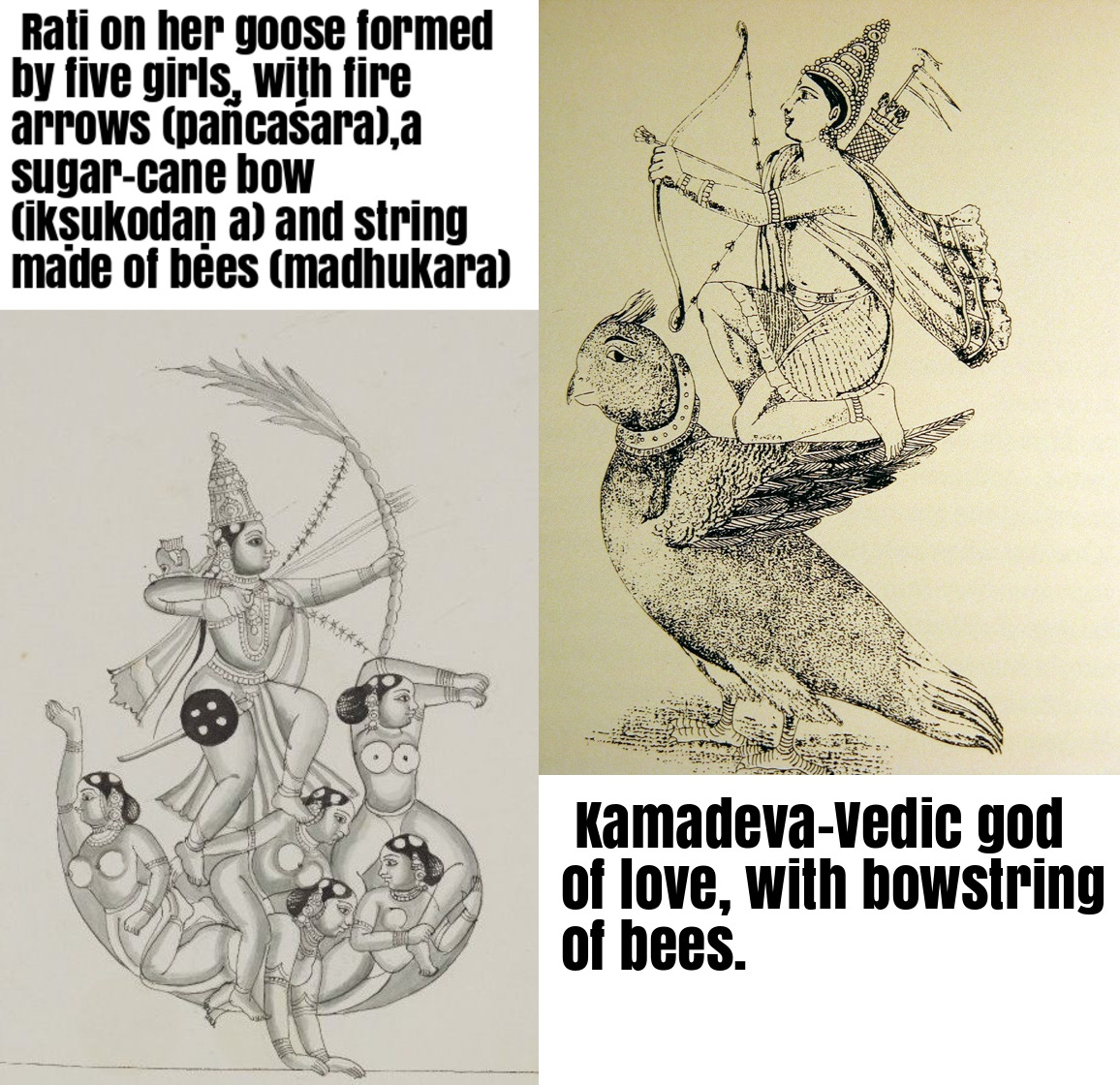
We can see from this meandering look at the traditions of soma, honey and the yogic, alchemical and tantric philosophies that focus on collecting and consuming an outer elixir that catalyses an inner-nectar. The modern Tantric, the Rasa Siddha in the Kali Yuga must find the rare and exotic flowers to produce a superior nectar or SomaRas capable of supreme transmutation of consciousness. The thick, heavy, dense and base energy of this world age is an inertia of seduction by matter and materialism so viscous and entrapping to the senses and spirit that only a true focus of pure will with the alchemical sacraments and skillful means dissolve and disperse it. This is the Universal Solvent of the philosopher’s stone, the sacred beads of the Siddhas, the sacred pills of the Lamas, the sacred amrita bhasma of the yogis, the secret mantra of the tantriks, the secret yantras of the Gurus, all must converge to passify the inner buzzing and bewildering sensory overload of this rusted and iron world age. We must collect the nectars, power substances and teachings and manifest and co-create the living numinous mandala. We must sanctify our hearts, hearths, homes and lands into ashrams and temples, beacons of the spiritual quest. Butter lamp lit laboratories, Shiva gardens, sacred fire and celestial agriculture and basing the art of living on these precious nectar teachings from the flowered minds of the saints yogis and gurus of aeons past.
Scientific study on the effect of Bhramari Pranayama on health issues from blood pressure to tinnitus, headaches etc.: Effects of Bhramari Pranayama on health – A systematic review
Bhramari Pranayama (Bee Breath):
1. Sit up straight in a quiet, well ventilated corner with your eyes closed. Keep a gentle smile on your face.
2. Place your index fingers on your ears. There is a cartilage between your cheek and ear. Place your index fingers on the cartilage.
3. Take a deep breath in and as you breathe out, gently press the cartilage. You can keep the cartilage pressed or press it in and out with your fingers, while making a loud humming sound like a bee.
4. You can also make a low-pitched sound but it is a good idea to make a high-pitched one for better results.
Breathe in again and continue the same pattern for 6-7 times